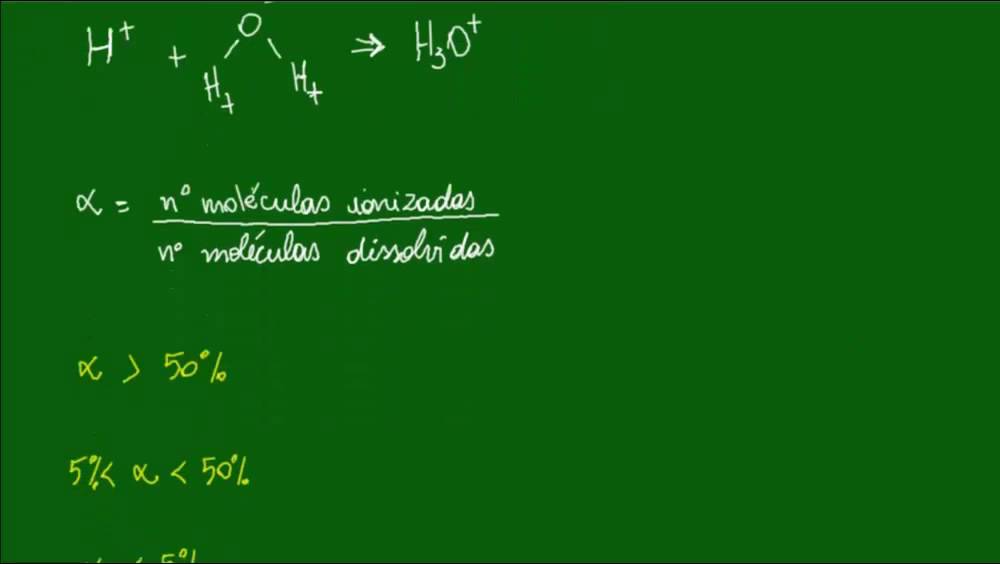Nomenclatura dos ácidos - Química inorgânica - Química
Summary
TLDRThis lesson covers the nomenclature of acids, explaining the differences between hydracids and oxyacids. Hydracids are named with 'acid' followed by the anion's name with the 'hydric' suffix, like 'fluorhydric' for HF. Oxyacids are more complex, with the central element's name followed by the 'ic' suffix, such as 'carbonic' for H2CO3. The lesson introduces key examples of both types of acids, focusing on how the central element influences the naming process. Future lessons will explore naming conventions when the central atom forms multiple oxyacids.
Takeaways
- 😀 The script introduces the nomenclature of acids, explaining how to name acid molecules.
- 😀 There are two types of acids: hydracids (without oxygen in the anion) and oxyacids (with oxygen in the anion).
- 😀 Hydracid nomenclature is simpler, formed by the word 'acid' followed by the name of the anion with the suffix '-hydric'.
- 😀 An example of a hydracid is HF, which is named 'hydrofluoric acid' (acid + fluorine with '-hydric').
- 😀 Another example of a hydracid is HCl, which is named 'hydrochloric acid' (acid + chlorine with '-hydric').
- 😀 A third example of a hydracid is HCN, which is named 'hydrocyanic acid' (acid + cyanide with '-hydric').
- 😀 Oxyacid nomenclature is a bit more complex and involves identifying the central element in the molecule.
- 😀 The central element in an oxyacid is bonded to oxygen atoms, which are then linked to ionizable hydrogen atoms (H+).
- 😀 The name of an oxyacid is formed by the word 'acid' followed by the central element's name with the suffix '-ic'.
- 😀 For example, H2CO3 is called 'carbonic acid' (acid + carbon with '-ic'). Another example is H3BO3, which is called 'boric acid' (acid + boron with '-ic').
Q & A
What are the two types of acids mentioned in the script?
-The two types of acids mentioned are hydracids and oxyacids.
What distinguishes a hydracid from an oxyacid?
-In a hydracid, the anion does not contain oxygen, while in an oxyacid, the anion contains oxygen.
How is the nomenclature of hydracids formed?
-The nomenclature of hydracids is formed by the word 'acid' followed by the name of the anion with the suffix '-hydric'.
What is the name of the acid formed from HF according to the script?
-The name of the acid formed from HF is 'hydrofluoric acid'.
What does the name of the acid depend on in the case of hydracids?
-The name of the acid depends on the anion present. For example, if the anion is fluoride (F-), the acid is called hydrofluoric acid.
What is the name of the acid formed from HCl?
-The name of the acid formed from HCl is 'hydrochloric acid'.
How are oxyacids different in their nomenclature from hydracids?
-Oxyacids are named based on the central element, and the name includes the word 'acid' followed by the central element's name and the suffix '-ic'.
What is the role of the central element in the naming of oxyacids?
-The central element determines the name of the acid, and it is followed by the suffix '-ic'. For example, carbon forms 'carbonic acid'.
What is the name of the acid formed from H2CO3?
-The acid formed from H2CO3 is called 'carbonic acid'.
What is the naming convention for an acid formed from boron, as mentioned in the script?
-The acid formed from boron is named 'boric acid'.
Outlines

This section is available to paid users only. Please upgrade to access this part.
Upgrade NowMindmap

This section is available to paid users only. Please upgrade to access this part.
Upgrade NowKeywords

This section is available to paid users only. Please upgrade to access this part.
Upgrade NowHighlights

This section is available to paid users only. Please upgrade to access this part.
Upgrade NowTranscripts

This section is available to paid users only. Please upgrade to access this part.
Upgrade Now5.0 / 5 (0 votes)





